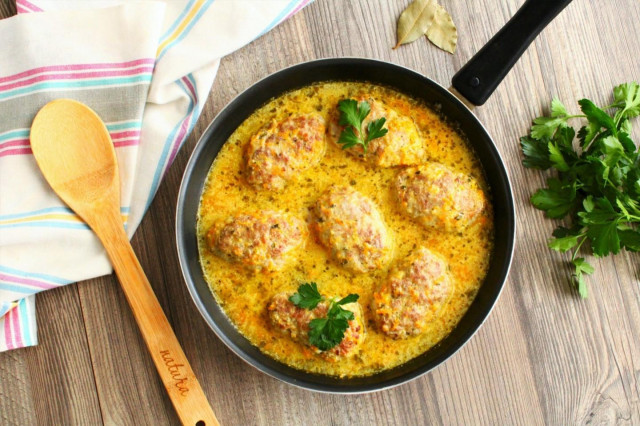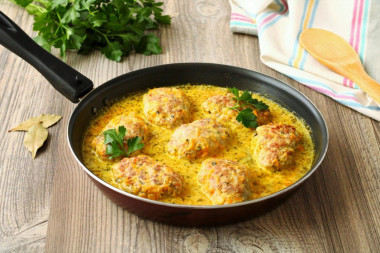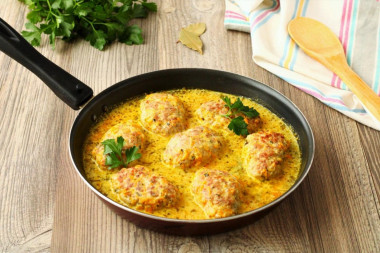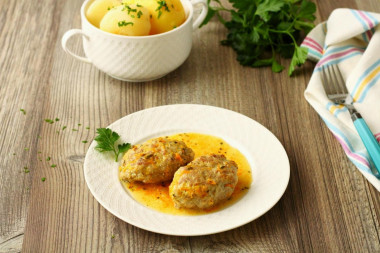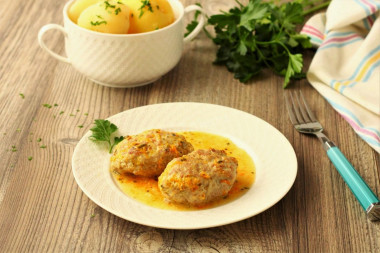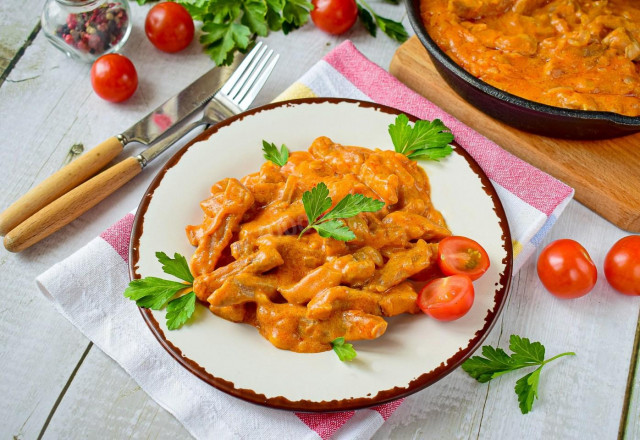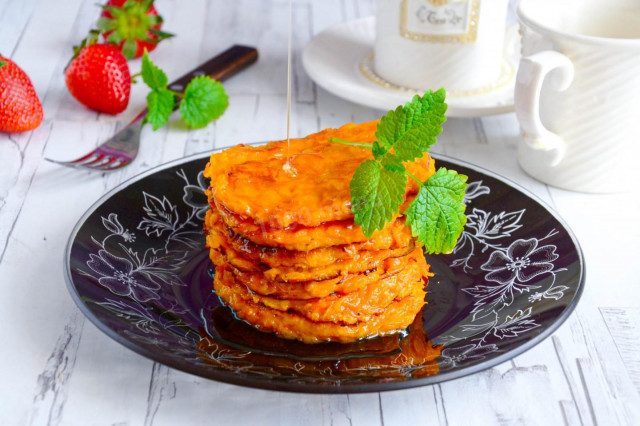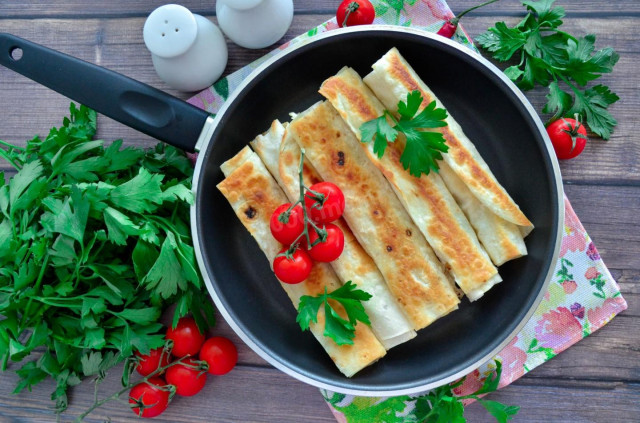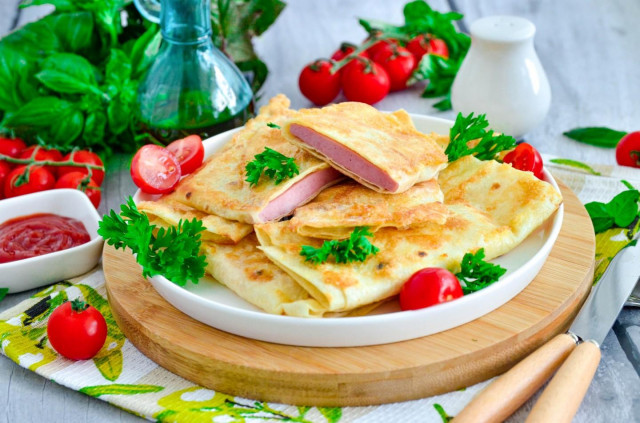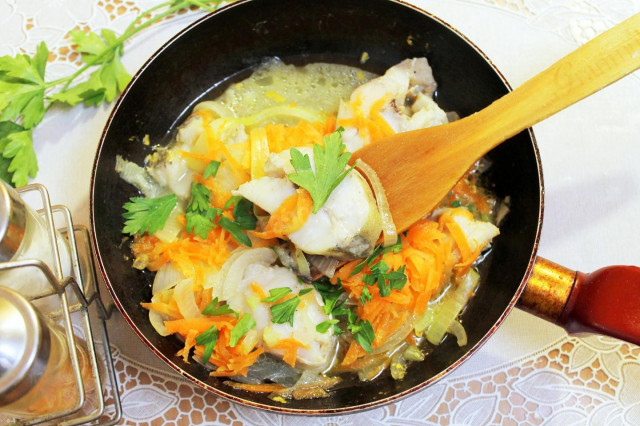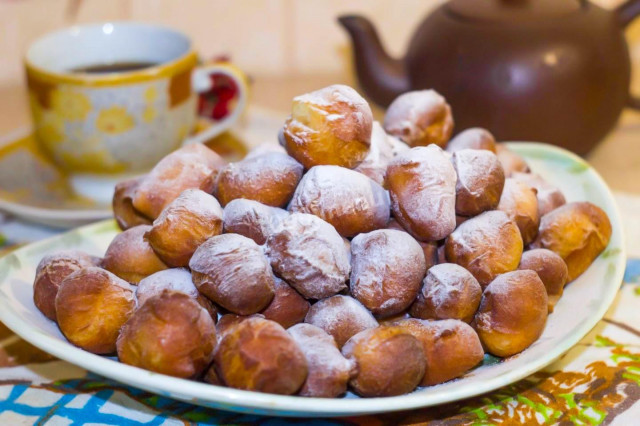Composition / ingredients
Step-by-step cooking
Step 1:
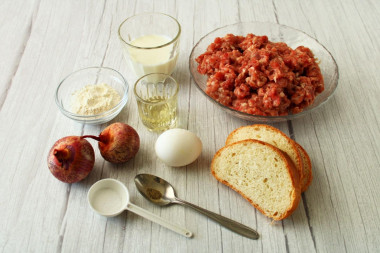
Cooking cutlets stewed in a frying pan, start by preparing the ingredients for the cutlet mass. I have mixed minced meat (pork and beef), but you can take any minced meat depending on your preferences. Be sure to take wheat bread. Rye is not recommended to be added to cutlets, as it can give the dish a sour taste.
Step 2:
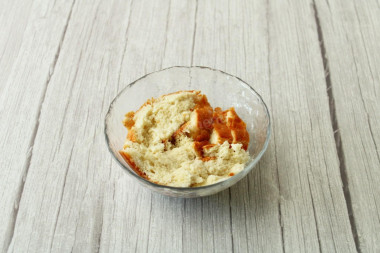
In a suitable small bowl, soak the bread in milk for 5 minutes so that it softens and becomes moist.
Step 3:
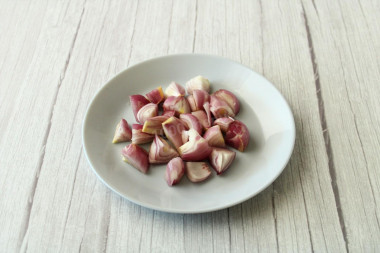
Wash the pre-peeled onions, cut them arbitrarily. The shape and size of the onion slicing in this case does not matter, since it will be crushed before being added to the minced meat. I took a red onion, you can use white, in ready-made cutlets its color will not be noticeable.
Step 4:
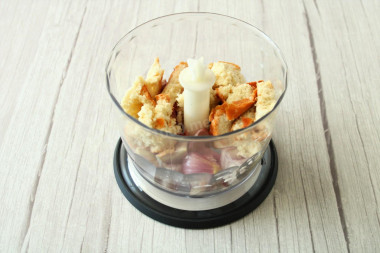
Chop the prepared onions and bread in a convenient way. You can use a meat grinder for this, I used a blender.
Step 5:
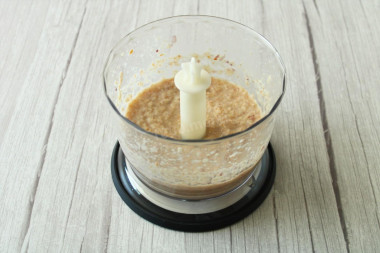
After grinding, there should be no large pieces of onion, the mass should be homogeneous.
Step 6:
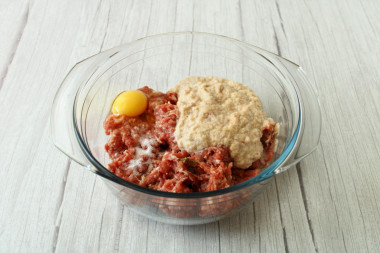
To prepare the cutlet mass, take a deep, spacious bowl in which all the ingredients will fit and it will be convenient to mix them. Combine the minced meat, chopped onion and bread, egg. Add salt to the minced meat, add ground black pepper, mix thoroughly.
Step 7:
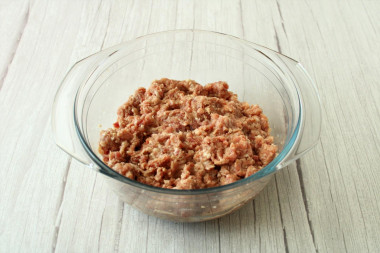
The better the minced meat is kneaded, the softer, more homogeneous it will be, and the cutlets will taste better.
Step 8:
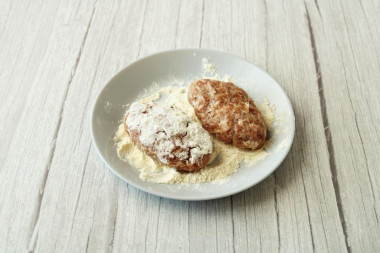
Pour a little flour on a flat plate. It is desirable that the plate has small sides, so the flour will not pour out on the table during breading. Roll the cutlets in flour on both sides so that a crust forms faster on the surface of the cutlets when frying.
Step 9:
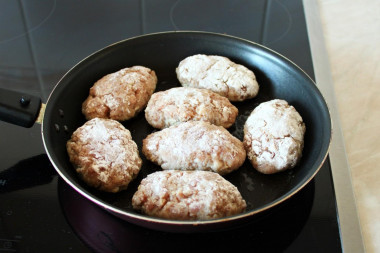
Heat the vegetable oil in a frying pan, put the formed cutlets in the pan. On a higher-than-average heat, fry the cutlets first on one side.
Step 10:
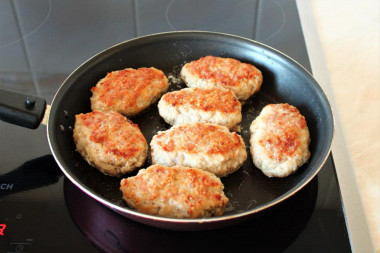
When a ruddy crust forms, turn the cutlets to the other side. Fry also until browned. Pre-frying is an important condition for quenching. The ruddy crust formed at the same time preserves the meat juice inside the cutlets. As a result, the cutlets will be juicy and more delicious.
Step 11:
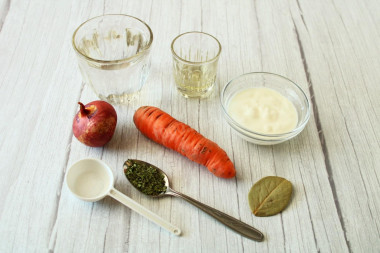
Prepare the sauce in which the cutlets will be stewed. Sour cream can be taken of any fat content. Choose any spices and seasonings as desired.
Step 12:
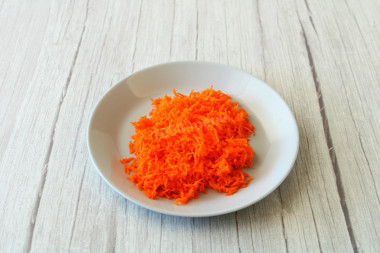
Pre-washed carrots in running water with a brush, clean, wash. Chop the carrots on a fine grater. Carrots will give the sauce a beautiful color.
Step 13:
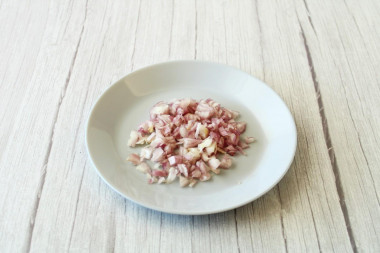
Peel and wash the onion. Cut the onion into small cubes to better reveal its taste when stewing.
Step 14:
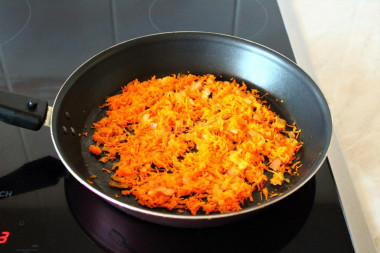
Add vegetable oil to the pan, put the prepared vegetables. Fry the vegetables over moderate heat for 5-7 minutes, stirring occasionally so that the vegetables cook evenly. Fry the vegetables in the pan in which the cutlets will be stewed. It should accommodate all the cutlets and have sufficient sides.
Step 15:
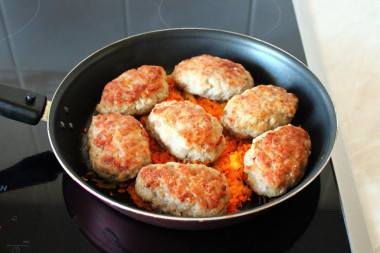
Add fried cutlets to the vegetables. You can fry vegetables and cutlets in parallel in two frying pans, then the cooking process will be a little faster.
Step 16:
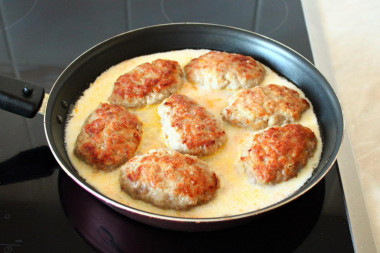
Adding sour cream to the sauce will improve the taste and consistency of the sauce and make the cutlets softer. Dilute the sour cream with hot water, pour the cutlets in a frying pan. Why hot water? In order not to expose the dish to a sharp temperature drop and reduce the boiling time. Let the cutlets boil, reduce the heat, add a little salt to the sauce. Simmer the cutlets under the lid at a low boil for 10 minutes.
Step 17:
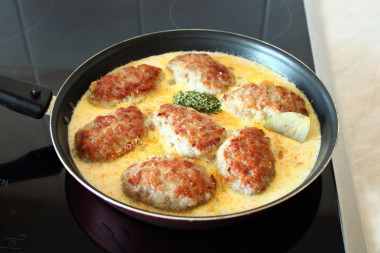
Add spices and seasonings to make the cutlets more fragrant. I have basil and bay leaf. Mix it up. The bottom diameter of my frying pan is 21 cm. The cutlets were half covered with sauce, so I turned them over during stewing. If the frying pan is smaller in diameter, the sauce will cover the cutlets completely, then you do not need to turn them over.
Step 18:
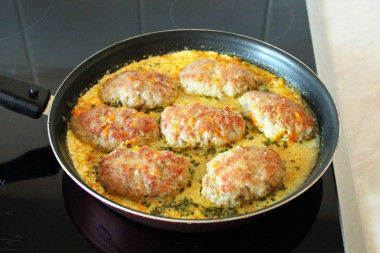
Simmer the cutlets with the lid closed on low heat for another 10 minutes.
Step 19:
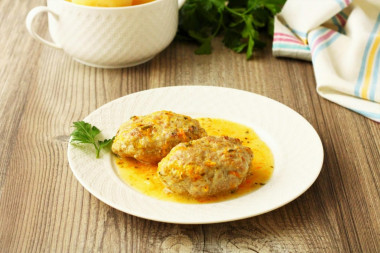
Serve stewed cutlets hot with any side dish of potatoes, cereals or vegetables. Enjoy your meal!
As a breading, you can use breadcrumbs.
The patties stewed in a frying pan turned out juicy. The sauce gave the cutlets a special rich taste and aroma.
Secrets, life hacks and all the most useful tips read in the article: "Cream and sour cream in cream sauce: what should I do so that they don't curl up?"
Any oils are useful only until a certain temperature is reached - the point of smoking, at which the oil begins to burn and toxic substances, including carcinogens, are formed in it. How to determine the roasting temperature and choose the best oil for frying, and which is better not to use at all, read here .
Important! An incorrectly selected frying pan can ruin even the best recipe. All the details on how to choose the perfect frying pan for different dishes read here .
Caloric content of the products possible in the composition of the dish
- Whole cow's milk - 68 kcal/100g
- Milk 3.5% fat content - 64 kcal/100g
- Milk 3.2% fat content - 60 kcal/100g
- Milk 1.5% fat content - 47 kcal/100g
- Concentrated milk 7.5% fat content - 140 kcal/100g
- Milk 2.5% fat content - 54 kcal/100g
- Sour cream with 30% fat content - 340 kcal/100g
- Sour cream of 25% fat content - 284 kcal/100g
- Sour cream with 20% fat content - 210 kcal/100g
- Sour cream of 10% fat content - 115 kcal/100g
- Sour cream - 210 kcal/100g
- Chicken egg - 157 kcal/100g
- Egg white - 45 kcal/100g
- Egg powder - 542 kcal/100g
- Egg yolk - 352 kcal/100g
- Ostrich egg - 118 kcal/100g
- Carrots - 33 kcal/100g
- Dried carrots - 275 kcal/100g
- Boiled carrots - 25 kcal/100g
- Fresh basil - 27 kcal/100g
- Dried basil - 251 kcal/100g
- Bay leaf - 313 kcal/100g
- Ground black pepper - 255 kcal/100g
- Mixed minced meat - 351 kcal/100g
- Vegetable oil - 873 kcal/100g
- Salt - 0 kcal/100g
- Water - 0 kcal/100g
- Onion - 41 kcal/100g
- Wheat flour - 325 kcal/100g
- White bread - 266 kcal/100g

